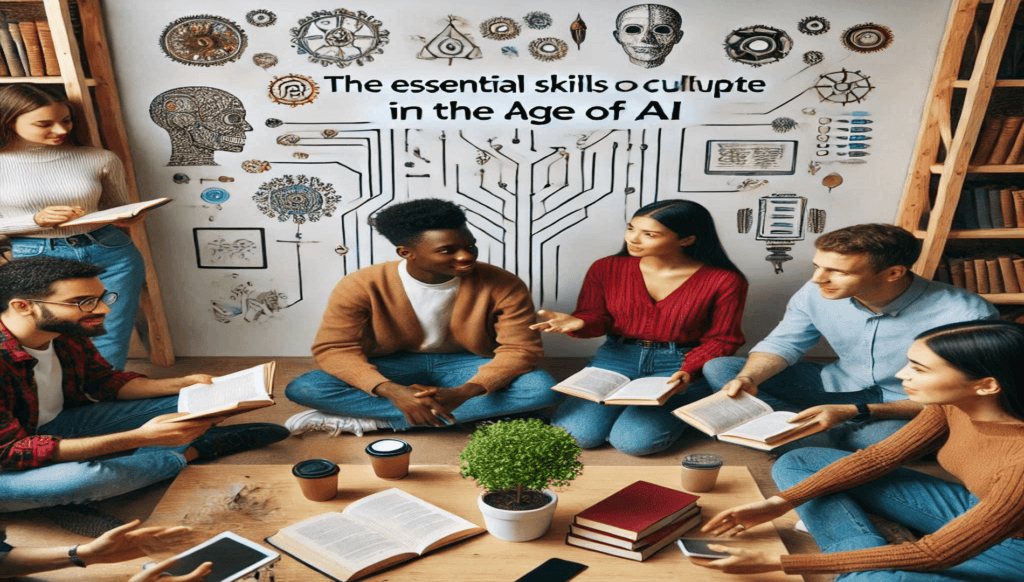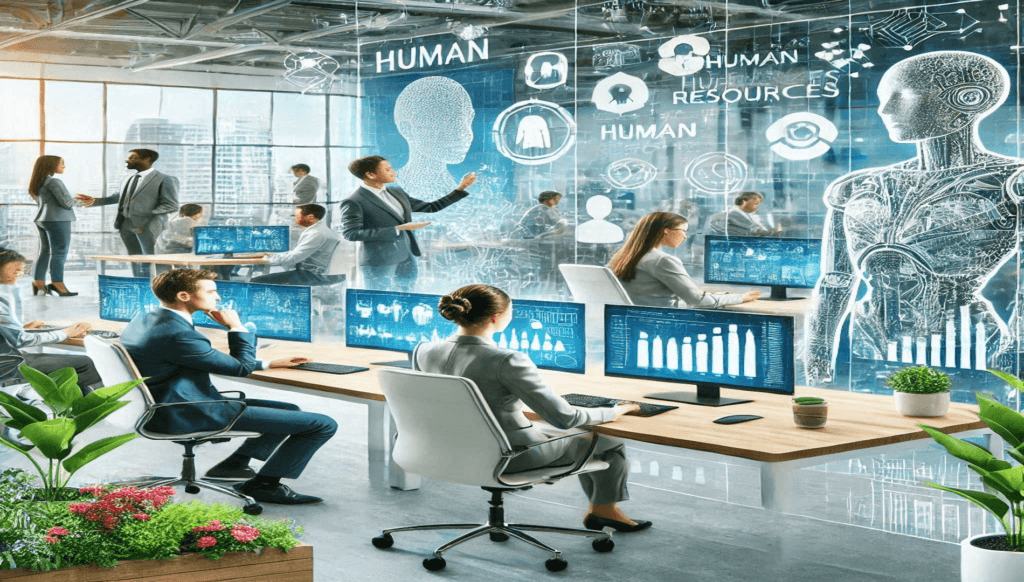
The global hiring landscape is undergoing seismic shifts, driven by technological innovation, economic factors, and an increasing focus on human-centric workplace values. As organizations and job seekers alike navigate these changes, understanding current global hiring trends becomes critical. Whether you’re a recruiter, hiring manager, or job seeker, staying ahead in the global job market requires a keen awareness of these trends and how they’re shaping the future of work.
The Role of Artificial Intelligence and Automation in Global Hiring Trends
One of the most transformative forces in the job market today is artificial intelligence (AI). Automation, powered by AI, is redefining roles across industries, impacting not only manual jobs but also white-collar positions.
Automation and Job Displacement
AI and automation are reshaping how work gets done by eliminating repetitive tasks. For example, generative AI tools now handle content creation, coding, and data analysis at unparalleled speeds. While this enhances efficiency, it also displaces roles traditionally filled by humans. Middle management, in particular, is at risk, with predictions indicating a significant decline in such positions by 2026.
New Roles and Skills Emerge
Interestingly, while some roles are being automated, new opportunities are arising. Jobs in AI development, data analysis, and roles requiring uniquely human skills—like creativity, critical thinking, and emotional intelligence—are increasingly in demand. This underscores the need for reskilling and upskilling initiatives to prepare the workforce for the future.
Skills-Based Hiring: A Shift in Global Recruitment Trends
Gone are the days when degrees and traditional job descriptions solely defined recruitment strategies. Today, organizations are embracing skills-based hiring as a core component of their talent acquisition strategies.
Focus on Verified Skills
Companies now prioritize candidates with verified technical and human capabilities over those with merely impressive resumes. However, challenges persist: while 68% of leaders report confidence in assessing technical skills, only 48% feel the same about evaluating soft skills like communication and adaptability.
Targeted Talent Acquisition
Organizations are tailoring recruitment strategies to attract specific workforce segments. Borrowing concepts from marketing, companies target “microcultures”—smaller, specialized groups within broader teams—to meet evolving job requirements. This approach ensures a better alignment of skills and organizational goals.
Human Sustainability: A New Dimension of Global Hiring Trends
The concept of human sustainability—ensuring employees thrive personally and professionally—is gaining momentum in the global job market.
Well-Being Takes Center Stage
Employees today expect more than competitive salaries. They seek roles that prioritize mental health, physical safety, financial well-being, and a sense of purpose. Yet, only 43% of workers believe their organizations leave them better off than when they started.
Expanding the Definition of “Worker”
Human sustainability efforts now extend beyond traditional employees to include contingent workers, supply chain personnel, and even future generations. Organizations are also tying these efforts to their Environmental, Social, and Governance (ESG) goals, focusing on equitable wages and community impact.
The Global Hiring Trends and Transparency
Transparency is a linchpin for building trust in today’s workplaces. However, achieving the right balance is crucial.
Bidirectional Transparency
Organizations increasingly share strategic decisions and workplace policies openly. Simultaneously, employees are more vocal about their expectations, often using platforms like social media. This bidirectional transparency fosters collaboration but requires careful management to avoid oversharing sensitive information.
Productivity and Privacy
Post-pandemic, many companies adopted productivity-monitoring tools. While these tools aim to measure output, they can erode trust if perceived as invasive. Organizations must prioritize privacy and establish clear, ethical policies around data collection.
Digital Playgrounds: The Future of Upskilling
Digital tools are revolutionizing skill development. Platforms like virtual reality (VR) and digital twins offer employees interactive, risk-free environments to learn and grow.
Fostering Human Capabilities
As work becomes more unpredictable, human capabilities like empathy, curiosity, and resilience are more important than ever. Digital playgrounds help cultivate these traits, preparing employees to navigate dynamic roles.
Negotiating Data Use
These platforms require large amounts of worker data, raising questions about privacy and intellectual property. Organizations must navigate these challenges thoughtfully, ensuring mutual benefit for employers and employees.
Microcultures: A New Frontier in Global Hiring Trends
The rise of microcultures within organizations is transforming workplace dynamics.
Why Microcultures Matter
Microcultures allow teams to operate with autonomy and agility while aligning with broader organizational goals. They create environments where employees feel a sense of belonging, boosting engagement and retention.
Balancing Micro and Macro Perspectives
While microcultures offer numerous benefits, misalignment with core organizational values can create silos. Leaders must encourage collaboration across teams while celebrating diversity within microcultures.
Evolving HR Practices in Global Hiring Trends
Human Resources (HR) is no longer just an administrative function. It’s evolving into a strategic driver of business transformation.
HR as a Boundary less Discipline
Modern HR practices emphasize orchestrating work rather than managing employment. This includes blending internal and external talent and aligning workforce strategies with overall business goals.
Data-Driven Decisions
HR teams are leveraging integrated data to measure outcomes like agility and human performance, ensuring alignment with organizational objectives. This data-driven approach enhances both employee experience and business impact.
Leadership’s Role in Shaping Global Hiring Trends Today
Leadership is the cornerstone of navigating these transformative trends.
Prioritizing Human Sustainability
Leaders must champion human-centric policies, balancing business outcomes with employee well-being. By fostering psychological safety and promoting adaptability, they set the tone for organizational resilience.
Embracing Emerging Technologies
Navigating the ethical use of technologies like AI is a critical leadership responsibility. Clear policies on data usage and privacy will build trust and future-proof organizations against potential backlash.
The Changing Nature of Work: Challenges and Opportunities
Economic fluctuations, technological advancements, and societal shifts are changing the very nature of work.
Decline of Traditional Roles
Middle management is shrinking, and gig economy roles are rising. For job seekers, this means embracing flexibility and lifelong learning to stay relevant.
Focus on Human Capabilities
Adaptability, collaboration, and emotional intelligence are becoming indispensable. These traits help individuals thrive in evolving roles and flatter organizational structures.
Conclusion: Navigating the Future of Global Hiring Trends
The global hiring trends we see today represent a blend of challenges and opportunities. For organizations, adapting to these shifts means investing in people—not just as workers but as holistic individuals. For job seekers, staying ahead requires a commitment to continuous learning and aligning personal goals with broader market needs.
As I see it, the future of work is dynamic, unpredictable, and full of potential. What do you think? Are you ready to embrace these trends and shape the future of work together?
Sources of Insight:
- Deloitte. (2024). Human Capital Trends.
- Westfall, C. (2024, December 19). White-Collar Job Cuts: Middle Management Decline. Forbes.
- Harvard Business Review. (2024, March). The Challenges of Becoming a Less Hierarchical Company.

Ajay Dhage is a seasoned Talent Acquisition leader with over 20 years of experience in recruitment and workforce strategy. Currently serving as the Talent Acquisition Lead for a global Oil & Gas EPC Company in India, ajay oversees the entire talent acquisition lifecycle across diverse and complex projects, from sourcing to onboarding and aligning top talent with complex organizational goals. With a proven track record in industries such as oil and gas, EPC, and renewables, he brings a customer-focused approach and innovative mindset to every project.
Through ajayable.com, ajay aims to share insights, trends, and strategies to empower HR professionals, Organizations and recruiters to excel in a competitive talent landscape.



